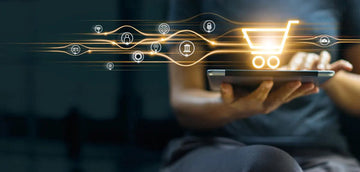The landscape of shopping has been dramatically reshaped by the advent of ecommerce, especially in India, where the digital revolution has taken a unique path. The traditional bazaar is now digital, and this transformation has been swift and innovative. As we look to the future, several key trends in ecommerce stand out that are not just changing how we buy, but also how sellers connect with us, the consumers. Let’s explore these innovations in online shopping and customer service technologies and understand what they mean for Indian consumers.
- Personalization Through Artificial Intelligence
One of the most significant advances in ecommerce is the use of AI to create personalized shopping experiences. From personalized product recommendations to custom-tailored advertisements, AI is helping brands understand consumer behavior like never before. In India, with its diverse consumer base, this means ecommerce platforms can cater to the specific tastes and preferences of different regions, age groups, and even individual consumers, making shopping a highly tailored experience.
- Augmented Reality Enhances Reality
Augmented reality (AR) is no longer just a novelty. For the Indian market, where consumers still cherish the touch-and-feel aspect of shopping, AR offers a middle ground. Ecommerce businesses are using AR to allow customers to visualize products in their own space before making a purchase—be it trying on a pair of glasses using their smartphone or seeing how a new sofa would look in their living room. This technology not only enriches the shopping experience but also reduces the hassle of returns.
- Voice-Activated Shopping
With the rising popularity of voice assistants like Amazon’s Alexa and Google Assistant in Indian households, voice-activated shopping is becoming increasingly prevalent. This hands-free mode of shopping is particularly appealing in multi-generational Indian homes where technology adoption varies widely across age groups. Voice commands simplify the process, making it more inclusive for older family members who might find traditional online shopping interfaces challenging.
- Social Commerce
Social media platforms are transforming from mere networking sites into bustling marketplaces. In India, where social connectivity is high, platforms like Instagram and Facebook have become significant drivers of brand discovery and sales. The integration of shopping features into these platforms allows consumers to shop seamlessly while scrolling through their feeds, making impulse buys more frequent and shopping a more social experience.
- Sustainability Drives Purchasing Decisions
More than ever, Indian consumers are aware of environmental issues and are demanding sustainability in their shopping choices. Ecommerce brands are responding by highlighting green credentials and offering eco-friendly alternatives. From biodegradable packaging to sustainable products, ecommerce is playing a crucial role in promoting environmentally responsible consumerism.
- Enhanced Customer Service with Chatbots
Customer service is getting a facelift with the integration of chatbots. These AI-driven helpers can provide 24/7 assistance, answer common queries, and resolve simple issues instantly. For Indian consumers, who often face linguistic diversity and varied levels of tech savviness, chatbots programmed in multiple languages and with culturally aware responses are significantly enhancing customer support.
Conclusion
The future of shopping in India looks bright with these innovations leading the way. As ecommerce adapts to the evolving needs of the Indian consumer, it brings about not just convenience and efficiency, but also a more personalized, interactive, and sustainable shopping experience. The blend of technology with traditional shopping values promises a vibrant future for ecommerce in India, making it an exciting time for both consumers and businesses alike.
This is more than just shopping; it's the dawn of a new era in the Indian marketplace, where tradition meets technology, creating endless possibilities for the future.














